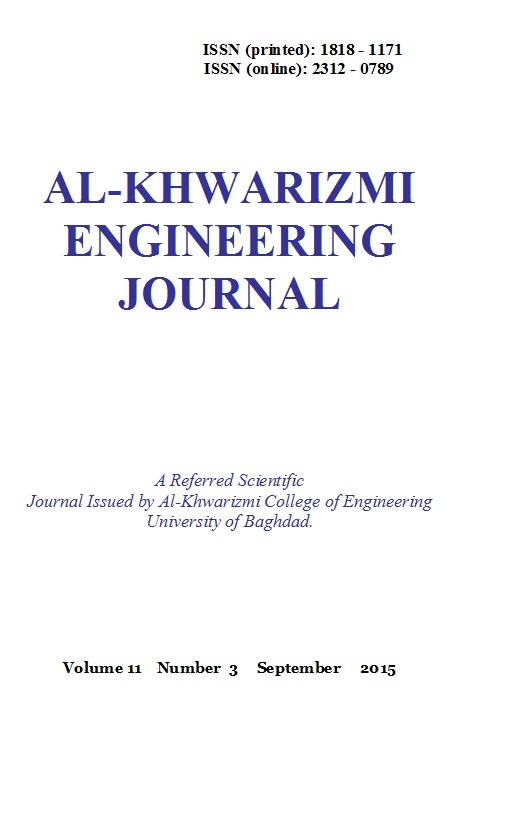Studying and Modeling the Effect of Graphite Powder Mixing Electrical Discharge Machining on the Main Process Characteristics
Keywords:
Keywords: EDM, RSM, MRR, TWR, SR, AISI D2die steel, graphite powder mixing.Abstract
Abstract
This paper concerned with study the effect of a graphite micro powder mixed in the kerosene dielectric fluid during powder mixing electric discharge machining (PMEDM) of high carbon high chromium AISI D2 steel. The type of electrode (copper and graphite), the pulse current and the pulse-on time and mixing powder in kerosene dielectric fluid are taken as the process main input parameters. The material removal rate MRR, the tool wear ratio TWR and the work piece surface roughness (SR) are taken as output parameters to measure the process performance. The experiments are planned using response surface methodology (RSM) design procedure. Empirical models are developed for MRR, TWR and SR, using the analysis of variance (ANOVA).The best results for the productivity of the process (MRR) obtained when using the graphite electrodes, the pulse current (22 A), the pulse on duration (120 µs) and using the graphite powder mixing in kerosene dielectric reaches (82.84mm³/min). The result gives an improvement in material removal rate of (274%) with respect to the corresponding value obtained when copper electrodes with kerosene dielectric alone. The best results for the tool wear ratio (TWR) of the process obtained when using the copper electrodes, the pulse current (8 A), the pulse on duration (120 µs) and using the kerosene dielectric alone reaches (0.31 %). The use of graphite electrodes, the kerosene dielectric with 5g/l graphite powder mixing, the pulse current (8 A), the pulse on duration (40 µs) give the best surface roughness of a value (2.77 µm).This result yields an improvement in SR by (141%) with respect to the corresponding value obtained when using copper electrodes and the kerosene dielectric alone with the same other parameters and machining conditions.
Keywords: EDM, RSM, MRR, TWR, SR, AISI D2die steel, graphite powder mixing.
Downloads
Downloads
Published
Issue
Section
License
Copyright: Open Access authors retain the copyrights of their papers, and all open access articles are distributed under the terms of the Creative Commons Attribution License, which permits unrestricted use, distribution, and reproduction in any medium, provided that the original work is properly cited. The use of general descriptive names, trade names, trademarks, and so forth in this publication, even if not specifically identified, does not imply that these names are not protected by the relevant laws and regulations. While the advice and information in this journal are believed to be true and accurate on the date of its going to press, neither the authors, the editors, nor the publisher can accept any legal responsibility for any errors or omissions that may be made. The publisher makes no warranty, express or implied, with respect to the material contained herein.












